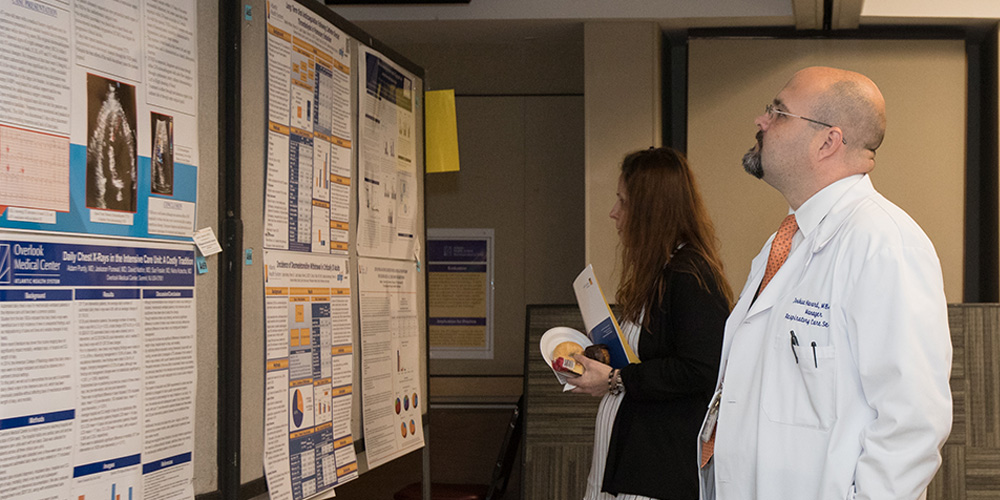Atlantic Health System is deeply committed to using research and innovation to advance healthcare and ensure patients have access to new therapies that can ultimately improve the quality of their lives.
On May 1, the health system hosted its annual systemwide Research and Innovation Day Symposium, which allowed physicians, nurses, and clinical team members from across the system and our Atlantic Medical Group practices to submit and present their research.





Some of the research presented in the abstract room, set-up like a grammar school science fair with a number of posters, included:
- Did embedding a palliative care provider in oncology practices help patients?
- Injury Patterns of Equestrian Trauma Patients at an ACS Level I Trauma Center
- Does early mobilization help patients hospitalized for pneumonia and COPD
- The effect of aromatherapy in the beginning stages of labor
- A different way to diagnose autism
- Whether a planned care model helped adults control their diabetes
- The effect of pet therapy on hospitalized children
In addition to the posters, Atlantic Health System team members highlighted their research onstage, which included:
- Whether antibiotic cement used in arthroplasty procedures is cost effective in terms of infection prevention
- The discovery that elevated levels of the cerebrospinal fluid chemokine CXCL13 in nervous system Lyme disease can aid in the diagnosis of that condition
- The finding that patients hospitalized for pneumonia or acute exacerbation of COPD shorten their hospital stays when they engage in mobility sessions rather than rest in bed.
The day also showcased innovations and inventions created by Atlantic Health System team members through AHa!, Atlantic Health System’s idea incubator. Created in 2017 to encourage innovations by Atlantic Health System team members, AHa! continues to spark new ideas that improve patient care and generate research patents.
Inventions showcased included:
- The Lighted Polyhedral Retractor, designed to create space around the thyroid so surgeons can more easily avoid veins and blood vessels during procedures.
- An Image Distance Control Device system, which allows nurses to obtain consistent photographs over time by providing positioning, orientation and lighting consistency by way of a novel camera phone attachment—resulting in more consistent and accurate photographs for the ongoing assessment and treatment of healing wounds.
- The ISSI® Box, which safely labels and stores insulin between nursing shifts in order to reduce insulin waste